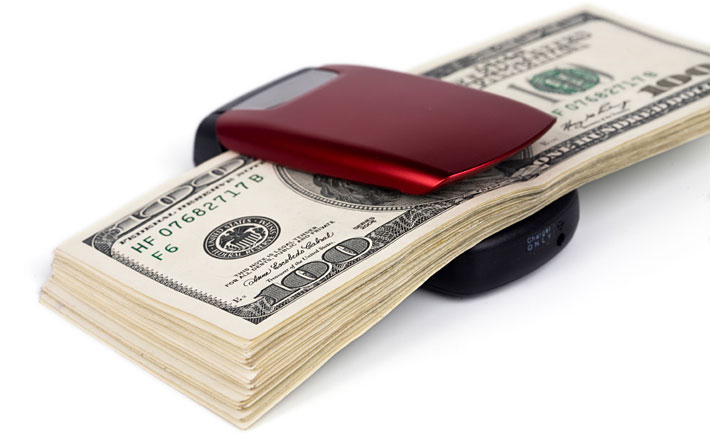Digital Innovation Gazette: Tech Trends
Is Near Field Communication a Near-term Opportunity?
By Tim Kridel for Digital Innovation Gazette
Backed by household names such as AT&T, Google, Intel, MasterCard and Microsoft, Near Field Communication (NFC) seems poised to be the next big thing in mobile apps. Another reason? The ultra-short-range wireless technology can facilitate a wide variety of tasks, including brokering cashless payments, unlocking doors, validating IDs and making digital signage interactive.
Yet another reason why app developers should start getting up-to-speed on NFC is that it’s already built into dozens of mobile phone models, such as the Samsung Galaxy S II. Although it will take at least another year before the installed base is big enough to label NFC a mainstream technology, Touchanote is among the dozens of apps already available for platforms such as Android. Here’s an overview of NFC and how to add it to your app.
How Does NFC Work?
NFC signals have a range of between 4 centimeters and 0.2 meters. That’s much shorter than Bluetooth and Wi-Fi, and that design has a couple of benefits. First, it minimizes the chance of interference when multiple NFC devices are near one another, such as checkout lanes or subway turnstiles. Less interference means fewer annoying glitches for users.
A second benefit is security. Eavesdropping on an NFC connection to harvest, say, credit card information requires either standing uncomfortably close to the user or carrying a large antenna — two big red flags.
Another thing that differentiates NFC from Bluetooth and Wi-Fi is that NFC is designed to establish a connection and exchange information in less than 0.1 second. That speed makes it an obvious fit for quick transactions, such as waving a phone at a subway turnstile during rush hour.
NFC’s speed also includes providing a way to exchange an extensive amount of information automatically rather than manually. For example, some digital signage allows passersby to use NFC to submit their names, addresses and phone numbers to enter a contest instead of having to type that on their phone first.
“One of NFC’s biggest premises is that you can take five clicks and turn them into one tap,” says Kent Helm, engineering manager in Intel’s Communications Architecture and Solutions Engineering unit. [Disclosure: Intel is the sponsor of this content.]
Although its signals are wireless, NFC doesn’t necessarily require power from the phone every time it’s used. Instead, the receiving device can use inductance to pull the information from the phone’s NFC chip. That design means it’s possible to create NFC-enabled apps with little or no battery drain even when they’re designed to be used frequently throughout the day.
Who’s Backing It?
NFC’s e-commerce potential is a major reason why so many companies are backing the technology. Two of the more high-profile initiatives are Google Wallet and Isis, which is a phone-based wallet created by AT&T Mobility, T-Mobile USA and Verizon Wireless.
Google Wallet and Isis are noteworthy for another reason: They’re examples of a power struggle between wireless carriers and other companies for control over — or at least a financial benefit from — transactions involving mobile phones. How that eventually plays out will determine factors such as whether a wireless carrier or another party handles billing on behalf of the app developer.
“There are a lot of e-wallets coming out that have nothing to do with a carrier,” says Helm. “At the end of the day, it’s not necessarily going to be tied to the carriers for e-commerce.”
So far, NFC is best known for tasks centered on a mobile phone. But Windows 8 will have native NFC stacks, and that support means a wider range of potential users and uses.
“If a developer has an NFC solution from Intel or anybody else, if they’re compliant with the Windows 8 logo requirements, then there’s no reason it shouldn’t work, according to the MSFT SDKs,” says Helm. “So it should all be a transferable experience between Windows 8 phones, laptops, tablets and desktops.”
How Do I Implement NFC in My App?
As the NFC ecosystem grows, so does the selection of tools for adding NFC to apps. One obvious place to start is operating system vendors.
For example, at Developer.Android.com, Google has an overview of Android’s Beam feature and how to leverage it to NFC-enable apps.
Another potential tool is under development at the Massachusetts Institute of Technology, whose App Inventor tool is designed to simplify Android development. Starting this summer, MIT researchers will develop a new feature for the tool that lets users add NFC functionality when creating an app. “It will be delivered sometime later in the year,” says Stephen Miles, co-chair of the NFC Cluster in the MIT Enterprise Forum. “That’s the plan.”
Tim Kridel has been covering all things tech
and telecom since 1998 for a variety of publications and analyst firms. Based
in Columbia, Mo., he still enjoys the childhood hobby that led to a career
writing about technology: ham radio.






